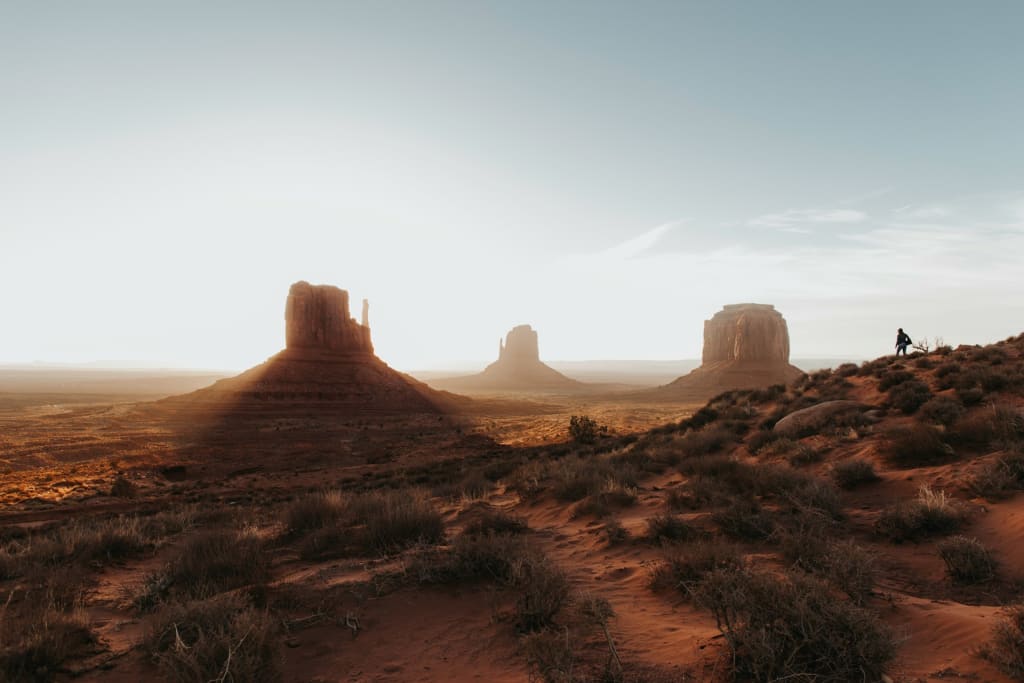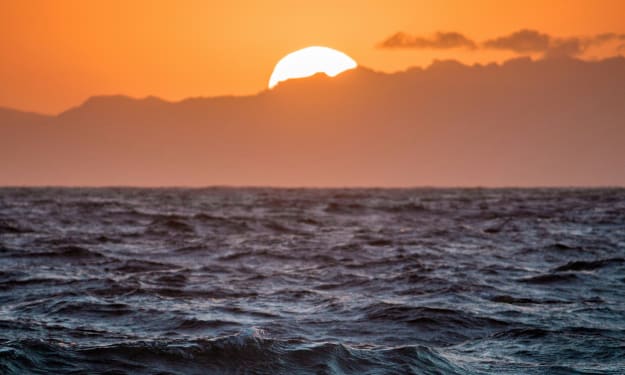Places on Earth Where Science Is Still Searching for Answers
Unraveling the Mysteries of Our Planet

The Sahara Desert is one of the largest and most unforgiving deserts on the planet. It’s an inhospitable place, with temperatures reaching up to 50°C and sandstorms that can envelop everything in a matter of seconds. But amidst all this harshness, there’s a place that is both beautiful and enigmatic: the Eye of Sahara.
The Eye of the Sahara is a giant formation in the Sahara that looks exactly like a giant bullseye. It’s so wide that you can see it from space, and even the CIA got interested in it in 1965. They planned a flyover looking for geomagnetic anomalies, and the findings are still classified. Perhaps the theories are true, and this place is truly the lost city of Atlantis.
Now, Atlantis supposedly sank beneath the waves, but recent discoveries are pointing us in a different direction. This is an ancient story that goes far back in time, and Plato was the first to mention it. The place had loads of greenery and a curious structure: three concentric circles of land surrounding two circles of water. Quotes from Plato’s writing suggest that Atlantis might not have been a typical island in the middle of the ocean. Plus, Atlantis had a major influence on Africa and Europe, challenging the idea of it being in the Atlantic.
It turns out that the Eye of Sahara and Atlantis look alike. When astronauts saw the Eye of Sahara from above, they initially suspected a meteorite impact crater, but the rings of the structure matched the layout described by Atlantis. More importantly, the Sahara wasn’t always a desert. It turned from a tropical region into a desert around 11,000 years ago. Researchers found evidence of a massive river called the Tamarit that could have sustained a community. This river flowed toward the Richat structure, aligning with Plato’s description.
The trans-Saharan Seaway ran through the Sahara 50 to 100 million years ago. The sea allegedly destroyed Atlantis around 11,500 years ago, likely due to a rapid rise in sea level caused by the end of the Ice Age. NASA’s worldview imagery shows patterns consistent with this theory. Those concentric rings might be a key to unlocking the secrets of our planet’s evolution over millions of years. They’re shaped by erosion on resilient rock layers, creating a spooky pattern of ridges and troughs. The central peak stands proud at 1,300 ft.
The central part has undergone a significant erosion makeover, revealing a circular structure with a raised peak. Unlike impact craters, the Eye of Sahara flaunts a striking balance and symmetry. Some say it results from rock uplift sculpted by wind and water; others think it’s an ancient anticline eroded to reveal its concentric glory. Then there’s a salt diapir theory suggesting that salt’s buoyancy sculpted this beauty.
Dating techniques have proved that it formed 541 to 252 million years ago, give or take a million or two. Ancient tools are scattered around the outer rings of the structure near riverbeds. Some older stone tools have also been spotted in the same areas. And still, even though some spear points from the Neolithic period have been found, there aren’t many signs that people were living there back then. The area seems to have been used for short-term activities like hunting and making tools.
Other unearthly mysteries haunt our world. One such enigma is in Norway: the ominous Hestdalen light phenomenon, also known as the Valley of Lights, leaves scientists confused. This valley is 10 miles wide and quite isolated, but a peculiar blue box sits high on the hillside, equipped with cameras scanning the valley.
The settling saga began in the 1980s when the night sky over Hestdalen erupted with burning fireballs, a recurring spectacle that sent shivers down the spines of those who witnessed it. This wasn’t a fleeting occurrence; rather, it became a regular thing. Terrified locals reported encounters with these unexplained luminous phenomena, some of which happened near their homes. News spread like wildfire, and at its peak, there were about 20 sightings every week. The phenomenon made its way into newspapers, magazines, and media worldwide. Soon, people flocked to the valley, hoping to see the lights themselves.
In 1984, experts joined the fray, armed with sophisticated instruments like magnetometers, radiometers, and other omers. What they encountered were mind-bending lights that defied explanation. Some moved at a leisurely pace, while others raced to the sky at an astonishing 19,000 mph. People tried to explain these lights: airplanes, distant reflections, ball lightning, satellites, planets, meteors, but the speed and how these lights danced ruled out all those theories.
We’re slowly approaching another mysterious place: the greatest subglacial lake among Antarctica’s 675 known lakes. It can easily hide unknown life forms. This lake is beneath the East Antarctic ice sheet, about 2 and 1/2 miles under the ice, and there you’ll see SE Lake Bosak. Located at 1,600 ft below sea level, this lake is 155 miles long and 31 miles wide at its broadest point, with an average depth of 1,400 ft. It’s like an underwater city with lofty pillars and deep bases.
The secret lake was discovered in 1993, yet it had been waiting to be found down there for over 2,000 years, collecting ancient secrets. In 2012, scientists drilled through the ice, creating the longest ice core ever. They pierced the ice to the lake's surface. The year 2013 brought an unexpected twist when the tranquil waters erupted.
The Eye of Sahara, the Hestdalen lights, and SE Lake Bosak are just some of the mysteries that our planet holds. These enigmatic places invite us to explore and unravel the secrets of our world, and perhaps, one day, we’ll find the answers we’re looking for.
About the Creator
Enjoyed the story? Support the Creator.
Subscribe for free to receive all their stories in your feed. You could also pledge your support or give them a one-off tip, letting them know you appreciate their work.





Comments
Test is not accepting comments at the moment
Want to show your support? Send them a one-off tip.